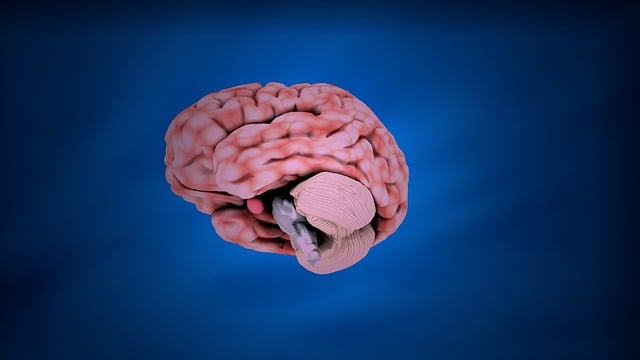Lone Tree Panic Disorder (LTPD) is a debilitating anxiety disorder characterized by unexpected panic attacks in non-threatening situations, leading to fear, isolation, and restricted activities. Effective therapy involves cognitive-behavioral therapy (CBT), exposure therapy, communication strategies, inner strength development, and cultural competency training for healthcare providers. Positive thinking is a powerful strategy, reducing symptom severity through mindfulness, cognitive restructuring, and community support. A structured positive thinking exercise routine, including journaling, strengthens neural pathways associated with positivity and calmness. Mental wellness coaching guides individuals in identifying and replacing negative thoughts with constructive ones, tailored to diverse backgrounds. Tracking progress and maintaining positive habits are crucial for successful LTPD and anxiety attack therapy, enhancing overall emotional well-being.
Positive thinking exercises offer a powerful tool in managing and overcoming Lone Tree Panic Disorder (LTPD) and its associated anxiety attacks. This article delves into the transformative potential of cultivating optimism as a therapy for LTPD, exploring effective strategies to integrate positivity into daily routines. We’ll guide you through understanding the disorder’s impact, leveraging positive thinking in anxiety management, establishing a dedicated exercise routine, and tracking progress to sustain lasting habits.
- Understanding Lone Tree Panic Disorder and Its Impact
- The Role of Positive Thinking in Anxiety Management
- Developing a Positive Thinking Exercise Routine
- Techniques for Integrating Positivity into Daily Life
- Tracking Progress and Sustaining Positive Habits
Understanding Lone Tree Panic Disorder and Its Impact

Lone Tree Panic Disorder (LTPD) is a specific type of anxiety disorder characterized by recurrent and unexpected panic attacks, often triggered by seemingly ordinary situations or places that hold no threat. This condition, also known as agoraphobia, can significantly impact an individual’s life, leading to feelings of fear, isolation, and restriction in daily activities. During a panic attack, symptoms may include rapid heartbeat, sweating, trembling, shortness of breath, and a sense of impending doom.
The impact of LTPD extends beyond the physical symptoms; it can also affect one’s psychological well-being. The disorder often fosters a cycle of avoidance behaviors as individuals try to escape or reduce the likelihood of future attacks. This, in turn, can limit their exposure to various environments and social situations, hampering their ability to live a fulfilling life. Effective therapy for LTPD involves techniques such as cognitive-behavioral therapy (CBT), which focuses on challenging negative thoughts and behaviors, and exposure therapy, designed to gradually expose individuals to anxiety-provoking scenarios in a safe manner. Communication strategies, inner strength development, and healthcare provider cultural competency training are also crucial components in managing and overcoming LTPD.
The Role of Positive Thinking in Anxiety Management

Positive thinking plays a pivotal role in managing anxiety and can be a powerful tool for those dealing with conditions like Lone Tree Panic Disorder and Anxiety Attacks. By focusing on cultivating optimistic thoughts, individuals can effectively reduce the intensity and frequency of anxiety symptoms. This approach is not about denying negative emotions but rather learning to reframe them, fostering a more balanced perspective. The practice helps in breaking the cycle of fear and worry that often characterizes anxiety disorders.
Through techniques like mindfulness and cognitive restructuring, one can challenge negative thought patterns and replace them with positive affirmations. This shift in mental outlook is supported by various therapy modalities, including community outreach programs designed to reduce the stigma surrounding mental illness. By embracing mind over matter principles, individuals empower themselves to take control of their well-being, enhancing their ability to navigate life’s challenges with greater resilience and peace of mind.
Developing a Positive Thinking Exercise Routine

Developing a Positive Thinking Exercise Routine can be a transformative step for managing Lone Tree Panic Disorder and Anxiety Attacks. It involves integrating practices that foster Mind Over Matter principles, enhancing self-awareness, and cultivating resilience. Start by dedicating just 10-15 minutes daily to your mental wellness journey. Incorporate Self-Awareness Exercises like mindful breathing or positive affirmation statements. For instance, repeat phrases like “I am safe” or “My mind is calm” to counter anxious thoughts.
Consider Mental Wellness Journaling Exercise Guidance as a powerful tool for tracking progress and identifying triggers. Write down your feelings, thoughts, and experiences, focusing on the positive aspects of each day. Regularly reviewing your entries can help you recognize patterns, gain insights into your anxiety triggers, and replace negative thought cycles with more constructive ones. Through consistent practice, these exercises strengthen neural pathways associated with positivity and calmness, offering effective Lone Tree Panic Disorder and Anxiety Attacks Therapy.
Techniques for Integrating Positivity into Daily Life

Incorporating positive thinking into daily life can be a transformative process, especially for individuals managing Lone Tree Panic Disorder and Anxiety Attacks. One effective technique is mental wellness coaching, where professionals guide clients in identifying negative thought patterns and replacing them with more constructive ones. This involves practicing mindfulness, such as focusing on the present moment and appreciating small joys, which can help reduce anxiety symptoms and foster a sense of calm. Additionally, cultural sensitivity in mental healthcare practice plays a vital role. Understanding and respecting diverse cultural beliefs and practices enables tailored interventions that resonate with individuals from various backgrounds.
Mental wellness coaching programs development offers personalized strategies to enhance mental resilience. These programs often incorporate techniques like gratitude journaling, where writing down positive experiences can shift focus away from stressors. Coupled with stress reduction methods such as deep breathing exercises and progressive muscle relaxation, these practices create a robust toolkit for managing anxiety. By integrating these techniques into daily routines, individuals can better navigate life’s challenges with improved emotional well-being.
Tracking Progress and Sustaining Positive Habits

Tracking progress is a vital component of any positive thinking exercise implementation, especially when addressing Lone Tree Panic Disorder and Anxiety Attacks Therapy. Regularly reviewing one’s journey allows individuals to acknowledge their achievements, no matter how small, fostering a sense of accomplishment that can significantly boost self-esteem. This process also helps in identifying areas that require further attention, providing an opportunity to adjust strategies and stay on course.
Sustaining positive habits is not just about the initial push towards change; it’s a long-term commitment to cultivating a mindset that promotes resilience and inner strength development. Incorporating mindfulness meditation and coping skills development into daily routines can make this journey more manageable. Over time, these practices become ingrained, turning moments of stress or anxiety into opportunities for growth rather than triggers for panic attacks. Remember, consistent effort in tracking progress and upholding positive habits is key to maintaining mental wellness.
Positive thinking exercises offer a powerful tool in managing and overcoming Lone Tree Panic Disorder and its associated anxiety attacks. By integrating these practices into daily routines, individuals can gradually shift their mindset, reducing symptoms and enhancing overall well-being. Through consistent effort and tracking progress, sustainable positive habits can be cultivated, leading to a more calm and resilient state of mind. This holistic approach, combining understanding, techniques, and tracking, empowers individuals to take control of their mental health and embrace a brighter future.














